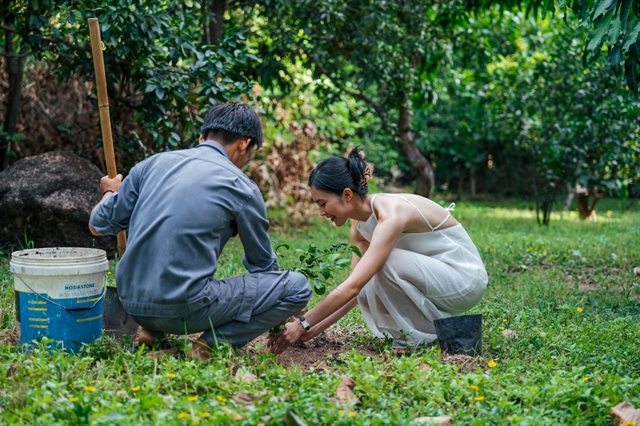Khánh Hoà aims to develop green, sustainable tourism
Culture - Ngày đăng : 09:24, 11/11/2024
 |
| Khánh Hoà Province will focus on developing green and sustainable tourism untill 2030. Photo: baokhanhhoa.vn |
KHÁNH HOÀ The People's Committee of Khánh Hoà Province has issued a plan for developing green and sustainable tourism in the province until 2030.
The most important goal by 2030 is to have 80 per cent of tourist attractions and businesses in the province labeled as green tourism.
Nguyễn Thị Lệ Thanh, director of the Khánh Hoà Province Department of Tourism, said that green tourism is a growing trend in the world. In recent years, many tourism businesses in Nha Trang - Khánh Hoà have paid attention to developing green tourism by limiting the use of disposable plastic products, building environmentally friendly tourism models and promoting indigenous cultural values into tourism activities.
However, the development of green tourism is only just starting, and the provincial tourism industry needs to aim for comprehensive green transformation and sustainable tourism development.
The Department of Tourism has advised the Provincial People's Committee to develop a plan for developing green and sustainable tourism in the province until 2030, Thanh added.
The plan for developing green and sustainable tourism to 2030 is to contribute to sustainable tourism development, protect the environment, preserve and promote the values of culture, history, community culture, and natural landscapes; develop green tourism products to exploit new, diverse, attractive tourist destinations, mobilizing the participation of State management agencies, the tourism business community, and attracting investment resources for green tourism development
Several resorts along Bãi Dài Beach in Cam Lâm District have built green tourism-driven farms and gardens to entertain visitors.
A representative of Alma Resort near Bãi Dài Beach said that part of the resort has been transformed into a farm of vegetables, fruits, herbs, and chickens.
The farm boasts a diverse array of fruits including bananas, coconuts, and papayas, along with a variety of colourful flowers.
These farming products are transported to the resort’s restaurants to serve tourists, the representative elaborated.
“Tourists, especially families with children, are interested in the farm. They like experiencing being a farmer,” the resort’s representative said.
Several resorts are introducing guests to flower gardens and farms with turbines made from plastic waste, while many hotels are transitioning to straw bags, glass bottles, and paper straws, all part of a collective effort to promote sustainable tourism in the province.
Over the past few years, the southern coastal province of Khánh Hoà has encouraged travel firms to expand their operations based on green tourism, according to Thanh.
“Tourists are willing to spend significantly on green tourism products and prefer staying at accommodations with green spaces or engaging in nature-based tours,” Thanh said.
Thanh emphasised the importance of assessing the environmental impact rigorously and training high-quality tourism personnel to meet the demands of innovative and sustainable tourism.
Efforts to raise awareness among tourists and the community about environmental protection are also crucial. Simple actions, such as avoiding littering and participating in cleanup activities, contribute significantly to protecting the environment and promoting green tourism.
Khánh Hoà is a leading province in Việt Nam’s tourism sector, known for its marine and island tourism. In 2023, the province welcomed 7.2 million tourists, a 181.6 per cent increase compared to 2022, with revenue exceeding VNĐ33 trillion (US$1.3 billion), up 142.8 per cent.
In the first half of 2024, the number of overnight tourists reached nearly 5.2 million, an 88 per cent increase year-over-year, with revenue estimated at VNĐ26.1 trillion ($1.1 billion), up 97 per cent. VNS
